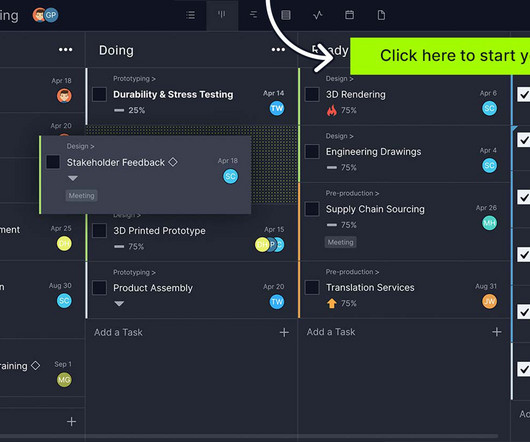How to Calculate Manufacturing Cycle Time (Formula Included)
ProjectManager.com
OCTOBER 10, 2023
People may confuse cycle time with takt time and lead time, which we’ll define and differentiate a bit later, but all are key metrics in manufacturing, especially lean manufacturing. Lean manufacturing is a process with the goal of minimizing waste and maximizing productivity in the manufacturing process.

















Let's personalize your content